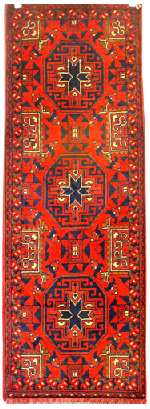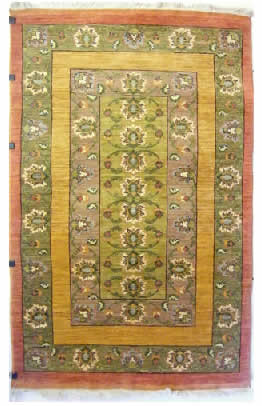In our continuing series into the origins and history of Oriental Rugs this week we take a look at 3 more types of rug from the Encyclopaedia that William Pryor (the owner of Oriental Rugs of Bath) has been writing over the past few years.

An aqche rug from Oriental Rugs of Bath
Aqche Rugs (also Aqcha) are handmade by Turkmen living in the central part of the Afghan Province of Jowzjan around the town of Aqcha. Deep reds are their usual primary colour with octagonal rose, elephant foot and stylised flower motifs in
Belouch Rugs (also Beluch, Belutch, Belutsch, Balouch, Baloutche, Balúchi) are hand-knotted by different nomadic tribes that wander between Persia and western Afghanistan. (Belouch is a generic term for nomads in that area.) Belouch carpets are closely related to carpets from Afghanistan and Turkmenistan. Their colours tend to be dark red, dark blue, black and brown; their patterns geometrical with curvilinear life-trees. They are often designed as prayer carpets with a prayer niche. The workmanship is of high quality; these carpets are tight woven, thin and are fine examples of genuine nomadic handicraft. Mashad or Meshed Belouch car-pets are sold in the city of Mashad in Iran, while Herat Belouch carpets are sold in the city of Herat in Afghanistan. dark blue.
Bibikabad Rugs (also Bibik Abad) are woven in the Hamadan region of Iran and are related to Malayers in technique. They tend to come in all-over designs, usually the Herati pattern or Boteh (Paisley), which may at times have a medallion









